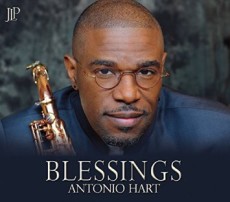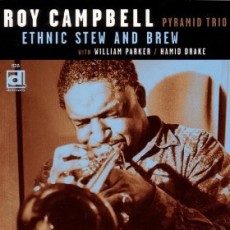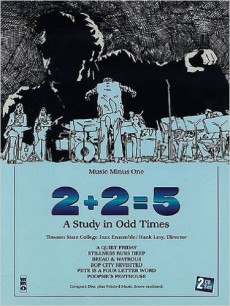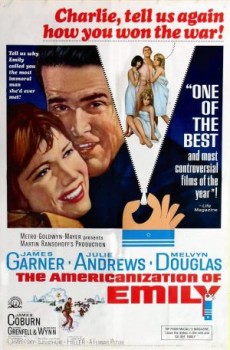
Daily Dose Of Jazz…
Antonio Hart was born on September 30, 1968 in Baltimore, Maryland. He attended the Baltimore School for the Arts initially trained as a classical musician. After graduating he attended and studied with Andy McGhee at Berklee College of Music and his interest turned to jazz. This was followed by a master’s degree from Queens College, city University of New York.
He gained recognition for his work with Roy Hargrove and has performed an recorded with Robin Eubanks, Dave Holland, McCoy Tyner, and Dee Dee Bridgewater. He has recorded nine albums as a leader
Alto saxophonist Antonio Hart is a member of the Alpha Phi Alpha fraternity and currently continues to perform, record and tour in conjunction with his serving as a. full-time professor of jazz studies in Aaron Copland School of Music at Queens College City University of New York.
More Posts: saxophone

Daily Dose Of Jazz…
Roy Sinclair Campbell, Jr. was born on September 29, 1952 in Los Angeles, California and raised in New York. At the age of fifteen he began learning to play trumpet and soon studied at the Jazz Mobile program along with Kenny Dorham, Lee Morgan and Joe Newman. Throughout the 1960s, still unacquainted with the avant-garde movement, he performed in the big bands of the Manhattan Community College.
From the 1970s onwards he performed primarily within the context of free jazz, spending some of this period studying with Yusef Lateef. In the early 1990s Roy moved to the Netherlands and began performing regularly with Klaas Hekman and Don Cherry. He led his own groups but took a sideman seat to perform with Yo La Tengo, William Parker, Peter Brotzmann, Matthew Shipp and other improvisers.
Campbell returned stateside to lead his group Other Dimensions In Music while also forming the Pyramid Trio, without a piano, with William Parker. He performed regularly as part of the Festival of New Trumpet Music held annually in New York City. He recorded seven albums as a leader, twelve as a co-leader and nearly five dozen as a sideman working with the likes of Jemeel Moondoc, Saheb Sarbib, Billy Bang, Ehran Elisha, Rob Brown, Alan Silva, Yuko Fujiyama, Steve Lehman, the Maneri Ensemble, Khan Jamal, Kevin Norton, Garrison Fewell and Marc Ribot among numerous others.
Trumpeter Roy Campbell, who primarily performed in the bebop and free settings but also played funk and rhythm and blues, passed away on January 9, 2014 of hypertensive atherosclerotic Cardiovascular disease at the age of 61.
More Posts: trumpet

Daily Dose Of Jazz…
John Gilmore was born on September 28, 1931. Growing up in Chicago, Illinois he played clarinet from the age of 14 and took up the tenor saxophone while serving in the United States Air Force from 1948 to 1952. He then pursued a musical career, playing briefly with pianist Earl Hines before encountering Sun Ra in 1953.
For the next four decades, he recorded and performed almost exclusively with Sun Ra. This was puzzling to some, who noted Gilmore’s talent, and thought he could be a major star like John Coltrane or Sonny Rollins. Despite being five years older than Gilmore, Coltrane was impressed with his playing, and took informal lessons from him in the late 1950s. His epochal, proto-free jazz “Chasin’ the Trane” was inspired partly by Gilmore’s sound.
In 1957 he co-led with Clifford Jordan a hard bop Blue Note date Blowing In from Chicago with Horace Silver, Curly Russell and Art Blakey providing the rhythm section. In the mid-1960s John toured with the Jazz Messengers and participated in recording sessions with Paul Bley, Andrew Hill, Pete La Roca, McCoy Tyner, Freddie Hubbard, Elmo Hope, Phil Upchurch and others. By 1970 he was co-leading a recording with Jamaican trumpeter Dizzy Reece. Throughout his years of playing he mainly focused on the avant-garde with the Sun Ra Arkestra.
Gilmore’s devotion to Sun Ra was due, in part, to the latter’s use of harmony which he considered both unique and a logical extension of bebop. He occasionally doubled on drums and also played bass clarinet until Sun Ra hired Robert Cummings as a clarinet specialist in the mid-1950s. However, the tenor saxophonist made a huge contribution to Sun Ra’s recordings and was the Arkestra’s leading sideman, being given solos on almost every track on which he appeared.
John is known for his straight ahead post-bop running changes and fluency with a rhythmic and motive approach in addition to his long passages based exclusively on high-register squeals in the more abstract. His fame shrouded in the relative anonymity of Sun Ra’s Arkestra membership, his straight ahead post-bop talents are exemplified in his solo on the Arkestra’s rendition of “Blue Lou,” as seen on Mystery, Mr. Ra. Avant-garde tenor saxophonist John Gilmore led the Arkestra for a few years after SunRa’s death and up until his own of August 19, 1995.
More Posts: saxophone

Daily Dose Of jazz…
Hank Levy was born Henry Jacob Levy September 27, 1927 in Baltimore, Maryland. He studied composition with George Thaddeus Jones at Catholic University in Washington, DC. He became interested in odd meters used by Maurice Ravel, Paul Hindemith and Igor Stravinsky, pre-dating Dave Brubeck’s 1959 Time Out album.
A prolific arranger of jazz standards, though few of them were published during his lifetime, Hank was especially fond of the music of the Broadway stage as it came through bebop by composers Cole Porter, George Gershwin and Jerome Kern. However, in his last years, he more frequently turned to bebop originals by Charlie Parker, Dizzy Gillespie and Tadd Dameron, sans odd meters but displaying distinctive creativity.
Levy began his full-time college teaching career at Towson State University in late 1967 creating The Towson State Jazz Ensemble. By 1970, his hard work and passion for teaching brought the band to national prominence when his Towson State Jazz Ensemble competed and won the outstanding band honors at the Notre Dame Jazz Festival. They recorded “2 + 2 = 5”, an album of six of his compositions and would go on to recorded several others over the years. Upon retirement in 1992 he founded the Hank Levy Legacy Band and recorded two albums for Sonority Records, Hank At Home and An Odd Time Was Had By All.
The 2014 jazz film Whiplash takes its title from Levy’s composition which originally appeared on the 1973 album Soaring by Don Ellis and portions of which are played several times during the course of the picture by the classroom Big Band ensemble. Composer, arranger and saxophonist Hank Levy, best known for his work with Stan Kenton and Don Ellis Orchestras, passed away in Parkville, Maryland on September 18, 2001.
More Posts: saxophone

Hollywood On 52nd Street
The music for the now classic jazz standard Emily, was composed by Johnny Mandel and the lyrics were written by Johnny Mercer. It was the soundtrack for the 1964 comedy-drama war film The Americanization of Emily. Paddy Chayefsky wrote the screenplay, directed by Arthur Hiller and starred James Garner, Julie Andrews, James Coburn, Melvyn Douglas and Keenan Wynn
The Story: Set in World War II London during the build-up to D-Day in 1944, the British found their island hosting many thousands of American soldiers who were oversexed, overpaid, and over here. Enter cynical coward Charlie Madison (Garner) who knows all the angles to make life as smooth and risk-free as possible for himself. But things become complicated when he falls for an English woman (Andrews), and his commanding officer’s nervous breakdown leads to Charlie being sent on a senseless and dangerous mission.
Sponsored By
www.whatissuitetabu.com
![]()



